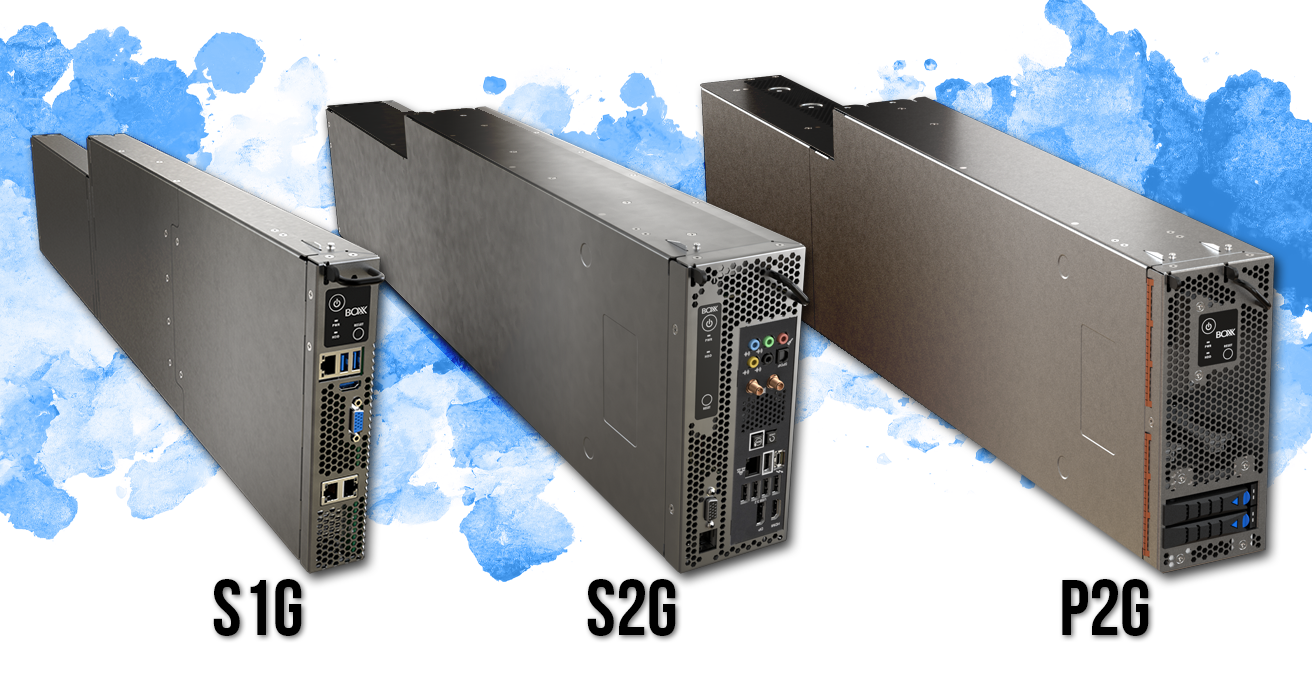
Published May 4, 2023 by John Vondrak
Tags: GPU Intel Core AMD EPYC 3Ds Max Autocad Maya Navisworks Revit Solidworks Cloud
FLEXX 2023 Use Cases
Since BOXX Blogs regularly runs articles on the latest upgrades to software applications, we felt it was a good time to review what’s new with hardware, in this particular case, our FLEXX product line. And speaking of “cases,” we’re rounding this out with some helpful use cases.
Before we get to those, let’s begin with a quick FLEXX overview. If you’re an enterprise business requiring remote access, in the process of streamlining your creative teams, accelerating their workflows, or enabling better team collaboration, by now you’re hopefully aware of our FLEXX data center platforms. FLEXX offers all the power and performance of multiple desk side workstations in a rack-mounted, high-density form factor. Each FLEXX module inside the platform is purpose-built to deliver state-of-the-art performance, reliability, and flexibility for content creation, rendering, and simulation.
Even better, a FLEXX platform fits in easily with your existing IT infrastructure and can simultaneously support multiple types of FLEXX compute modules, providing the highest application performance for engineers, architects, designers, artists, and other content creators. This enables you to provision remote workstations in minutes, accelerate workflows onsite or remotely, and access data, creative content, and team projects without losing performance (common with shared virtualized machine solutions). Accessible from any connected device, FLEXX modules deliver the same level of performance you get from BOXX desk side workstations.
The FLEXX rack mounted enclosure supports up to ten 1VU nodes or five 2VU modules. You can mix and match sizes (for example: four 1VU modules and three 2VU modules) because each can be inserted or removed without disrupting neighboring modules. FLEXX also comes equipped with Intelligent Platform Management Interface (IPMI) controller, a hardware-based platform management system that makes it possible to control and monitor the workstations remotely.
If this sounds perfect for your company, design studio, architecture firm, etc., how do you configure the correct one for your workflow?” Let’s begin with those aforementioned use cases.

Use Case #1
You’re leading an architecture firm deploying about 50 users remotely, either in the field or working from home. These users need access to workstation capabilities to perform technical work with Autodesk Revit. Previous implementation of VDI made sense for the backend office and project management team, but it was too slow for the power users. The ideal solution? FLEXX S1G.
FLEXX S1G
This is our flagship APEXX S3 desk side workstation condensed into a module built for creating with 3ds Max, Maya, Revit, AutoCAD, Navisworks, SOLIDWORKS, and GPU rendering. S1G features a 16 or 24-core, Intel® Core™ i7/i9 performance tuned up to 5.8GHz, liquid cooling, and one pro (NVIDIA or AMD) GPU.
Use Case #2
As a design studio, your team has transitioned to remote work. Previously, your team relied on workstations with dual GPUs to accelerate their rendering workflow. However, now that your team is working remotely, you need a solution that can provide the necessary computing resources to support multiple GPUs for 3ds Max or Maya. This is where FLEXX S2G comes in.
FLEXX S2G
Like the S1G, S2G is the APEXX S3 desk side workstation condensed into a module—but with two pro NVIDIA or AMD GPUs. Purpose-built for 3ds Max, Maya, Revit, AutoCAD, Navisworks, SOLIDWORKS, and GPU rendering, S2G also features a 16 or 24-core, Intel® Core™ i7/i9 processor performance tuned up to 5.8GHz and liquid cooling.
Use Case #3
You’re the leader of a small engineering team within a large manufacturing organization. Your team requires access to powerful simulation tools like ANSYS Mechanical, however, progress is often slowed due to a backlog among the analyst group. You want your team to have the ability to perform their own preliminary analyses and design iterations early in development, i.e., before final verification by the analyst group. The solution is FLEXX P2G.
FLEXX P2G
With a high core count processor ideal for computational workloads, P2G is also purpose-built for GPU rendering, but within a 2VU form factor because it houses a 64-core AMD EPYC™ 7002 series processor, 2TB of memory, and up to two NVIDIA GPUs.
That’s the use case overview, but for more detailed info, visit our FLEXX product page, check out the models, the spec sheets, and do not miss the video at the bottom of the page. Finally, for expert advice, call or online chat with a BOXX performance specialist at www.boxx.com or 877.877.BOXX.
